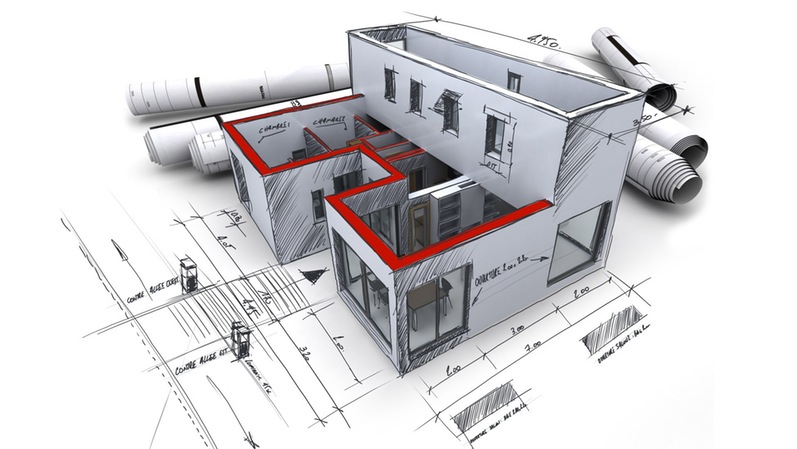The Impact of Technical Improvements on the Layout Practices of Contemporary Architects
The quick development of technical devices has considerably improved the style landscape for modern engineers, fostering unprecedented degrees of advancement and sustainability. Checking out these dynamics reveals a nuanced interplay between modern technology and standard layout techniques, triggering a better exam of what the future holds for building techniques.
Advancement of Architectural Devices
Just how have architectural devices transformed the design and construction processes over the centuries? The evolution of building tools has considerably impacted the performance, accuracy, and imagination of style and building and construction.
With the development of the Renaissance, the intro of the compass and the protractor marked an essential change. These tools enabled engineers to accomplish greater precision in their styles, promoting the appearance of even more elaborate and proportionate structures. The Industrial Transformation even more revolutionized building exercise with the intro of mechanized devices and products, permitting larger and more ambitious tasks.
In the 20th century, the development of computer-aided design (CAD) software application changed the landscape once again, giving engineers with extraordinary abilities in modeling and visualization. Today, progressed tools such as Structure Information Modeling (BIM) and parametric style software proceed to push the limits of building technology, enabling a more incorporated approach to layout and building processes.
Boosted Collaboration in Design
As technology remains to progress, enhanced partnership in design has become a keystone of modern building technique. The combination of digital tools such as Building Information Modeling (BIM), cloud-based platforms, and advanced visualization software application has transformed the way designers, designers, and stakeholders communicate throughout the layout process. These tools facilitate real-time interaction, permitting teams to share ideas, modifications, and feedback promptly, despite geographical place.

In addition, interdisciplinary cooperation has been structured via these technological innovations, enabling designers to function a lot more closely with other specialists, such as city organizers and environmental experts. The result is a more cohesive method to develop that considers different perspectives and expertise. Ultimately, improved collaboration in layout is not just a trend; it is crucial for producing cutting-edge, functional, and visually pleasing design in a significantly complicated globe.

Sustainability Through Technology
Sustainability in architecture has actually progressively ended up being intertwined with technical advancement, driving the market toward eco responsible practices. Contemporary designers are leveraging sophisticated technologies to lessen ecological impact while enhancing the efficiency of buildings. cda architects. One prominent instance is using Building Details Modeling (BIM), which enables precise preparation and resource appropriation, minimizing waste during construction and promoting power efficiency throughout a structure's lifecycle
Additionally, clever products and energy-efficient systems are being integrated into layouts to optimize source use. Technologies such as solar cells and green roof systems harness renewable resource sources, adding to reduced carbon impacts. Additionally, the application of expert system in style procedures enables designers to imitate and evaluate power intake, assisting decisions towards more lasting outcomes.
The integration of sustainable modern technologies not only aligns with global environmental goals however additionally fulfills a boosting need from consumers for environment-friendly click this site options. As architects embrace these developments, the emphasis changes in the direction of developing spaces that are not only visually pleasing yet also functionally sustainable, thus redefining the criteria of contemporary design. By doing this, technology serves as a catalyst for sustainability, allowing architects to create buildings that regard and boost the native environment.
Challenges in Application
While technological improvements in style hold great promise for enhancing sustainability, their implementation frequently comes across significant challenges. One primary challenge is the steep knowing curve associated with brand-new technologies. Architects and building professionals might need substantial training to properly make use of innovative software and devices, which can delay job timelines and boost prices.
Furthermore, the integration of arising technologies, such as Building Info Modeling (BIM) and lasting products, typically requires collaboration across multidisciplinary groups. This collaboration can be prevented by differences in competence, workflows, and interaction styles, bring about potential conflicts and inadequacies.

In addition, governing structures and structure codes may not maintain rate with technological improvements, producing ambiguity and prospective conformity concerns. This obstacle can discourage engineers from totally welcoming brand-new technologies, as the danger of non-compliance may surpass the advantages. Addressing these application challenges is critical for the effective combination of technological innovations in contemporary architectural methods.
Future Patterns in Style
The obstacles connected with the implementation of new innovations in architecture have actually triggered a reevaluation of future trends within the sector - cda architects. As designers browse problems such as sustainability, urbanization, and social equity, they are significantly taking webpage on cutting-edge modern technologies to boost layout effectiveness and environmental efficiency
One popular fad is the combination of synthetic intelligence (AI) in the layout process. AI devices can examine huge datasets to inform design look what i found decisions, enhancing both creative thinking and performance. Structure Information Modeling (BIM) continues to advance, enabling real-time collaboration among stakeholders and promoting structured task monitoring.
Sustainable design methods are likewise acquiring energy, with designers concentrating on adaptive reuse and regenerative style principles that decrease source usage and waste. The unification of clever products and renewable resource resources will additionally boost the resilience of structures despite environment modification.
In addition, the increase of parametric design enables more tailored and context-sensitive architectural remedies (cda architects). By utilizing these innovations, architects are poised to create developed environments that not only address the immediate needs of culture yet additionally expect future obstacles, therefore redefining the duty of style in an ever-changing world
Final Thought
Technological improvements have considerably reshaped architectural design practices, facilitating enhanced precision, collaboration, and sustainability. The integration of tools such as Building Info Modeling and parametric style software application, alongside synthetic knowledge and wise products, empowers designers to deal with complicated challenges much more efficiently.
Comments on “Check Out Acclaimed Tasks by Distinguished CDA Architects”